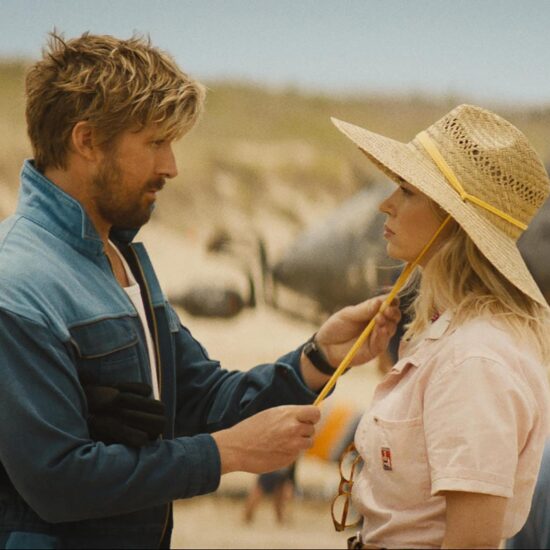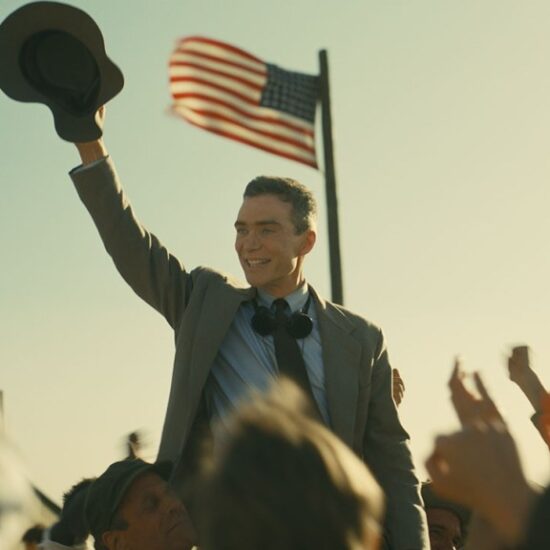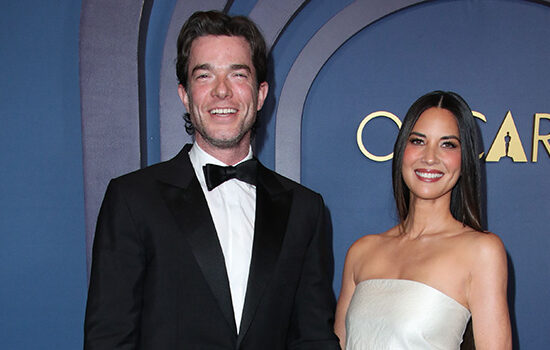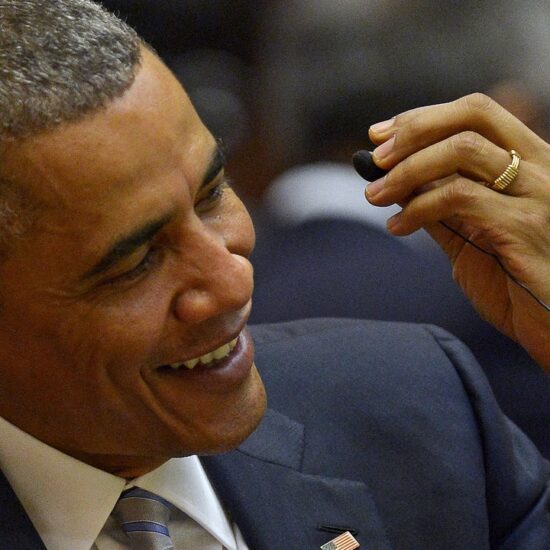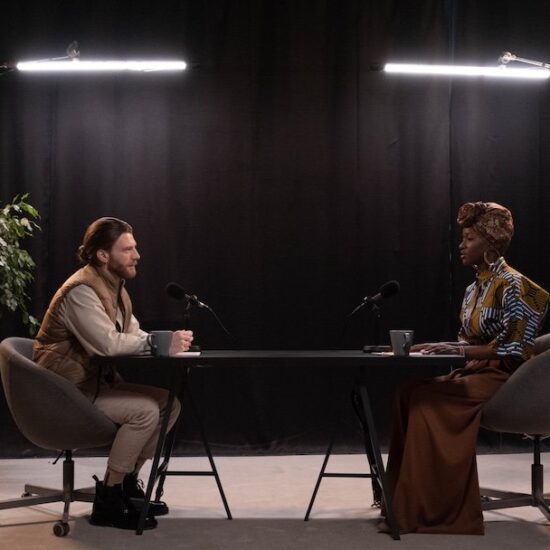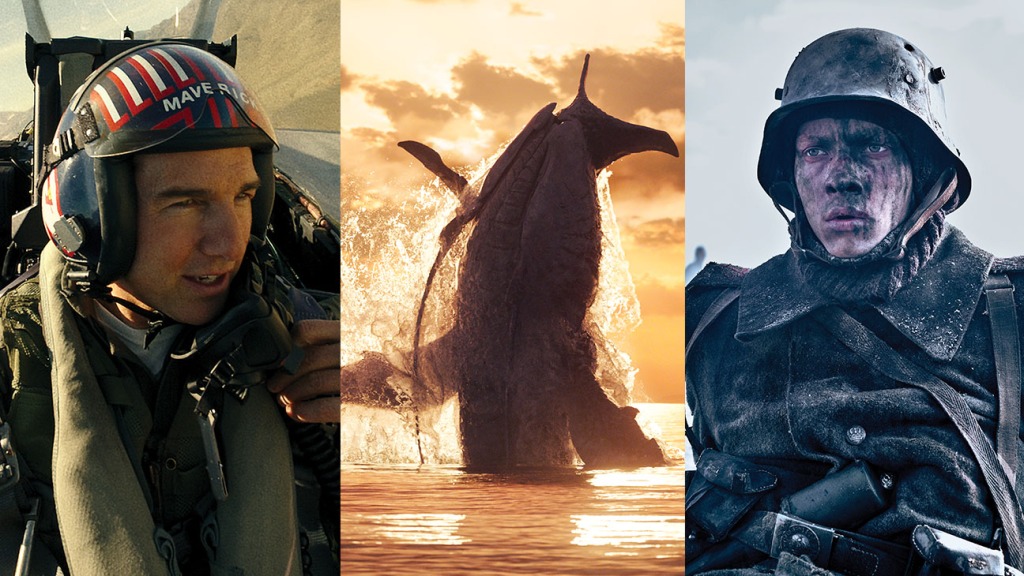
When it comes to creating movie sound, it’s all about world-building, says Julian Howarth, sound mixer on Avatar: The Way of Water. “And then it’s to make something believable, emotional and to tell a story,” he adds. “In any film, that’s what we’re here to do.”
For Howarth’s team, that was about telling an immersive story on the fictional moon of Pandora. But the other Oscar nominees for best sound also placed viewers on a World War I battlefield for All Quiet on the Western Front, in Gotham City for The Batman, in the front row for Elvis Presley’s most memorable performances for Elvis and in the cockpits of naval fighter jets for Top Gun: Maverick.
Work on The Way of Water involved creating underwater species such as the whale-like tulkun, whose vocalizations were carefully crafted with a variety of sounds — among them, those made by whales, coyotes, owls and dolphins. Supervising sound editor Gwendolyn Yates Whittle says that in cases where the Na’vi interact with the tulkun, “Our job was to protect the emotional validity of the human performances and then have those creatures also be able to interact with those performances in a real way.”
Howarth says that capturing production sound involved modifying microphones to enable them to be used underwater, even at a 30-foot depth. And with water a character unto itself, “every bubble and every lap has been carefully curated and put into that film.”
Adds Yates, “We had to make the water feel believable, like real water, even though it’s zeros and ones. So, there’s reverb. The deeper into the water you go, the lower the pitch. You can feel the depth, depending on where you are in the story.”
For All Quiet, filming outside Prague during COVID posed plenty of challenges. “There wasn’t even the slightest chance for us to go on set and grab extra sounds as we normally do,” says supervising sound editor Frank Kruse. The on-set sound team, therefore, aimed to “grab as many wild tracks and extra sounds that are unique to the location as you can.” While the team had to also capture clean dialogue on location, Kruse describes the scene on set as a rush. “[They] brought in extra microphones and additional helping hands who would, in between takes, grab a bunch of the extras and ask them to run through the mud or roll around in the dirt,” he remembers.
But in approaching the mix, Kruse says the goal was not to “re-create a scientifically correct soundscape,” but rather to focus on the emotional perspective of the film’s protagonist, the young German soldier Paul.
Much of the sound work for Elvis was dedicated to Presley’s vocals. For the singing, the team blended the performances by star Austin Butler with those of Presley. This involved a combination of playback and live recording, while restored vintage microphones from each era in the film captured Butler’s voice. In the end, Butler performed the Presley songs from the 1950s; a mix of the original recordings with Butler’s was used for the ’60s and ’70s sequences (decades in which the quality of the original recordings improved).
Austin Butler in Warner Bros.’ Elvis.
Courtesy of Warner Bros
Crowd scenes combined archival material with new recordings. “Thematically, [the crowds were] an enormous part of the story,” says Wayne Pashley, supervising sound editor, designer and rerecording mixer. “I went through [performance archives] and pulled out the original crowd material and where they happened within the song infrastructures.” He says extras were recorded — even directed by Baz Luhrmann — “because we knew that when we came to postproduction, pulling 500 people together during COVID was going to be near impossible.” They recorded loop group as needed for each scene, working with performers of varied ages, genders and accents.
Will Files, supervising sound editor/designer on The Batman, wanted the Batmobile to feel almost like a banshee or an animal. “It had to be scary enough to make everyone stop [by signaling a threat] but plausible enough to still be a machine,” he says. It started with a shrieky bottle rocket sound. “It had this really crazy, distorted sound to it, but it was a second long,” he explains. While thinking about how to resynthesize that sound and make it longer, he recalled a YouTube video he saw. “Someone had taken a Justin Bieber song and run it through software that slowed it down by 800 percent, and it turned this pop song into what sounded like this crazy, ambient soundscape,” he recalls. He tried this approach, and it worked to create a new, longer version of the original source but still kept “that sort of shrieky, rippy sound.”
For Gotham’s soundscape, says Files, the team wanted to show “a densely populated place that hasn’t been very well taken care of.” They leaned into elements of cities like New York and Chicago, incorporating the sound of elevated trains and taking inspiration from The Godfather and The French Connection.

Robert Pattinson in Warner Bros.’ The Batman.
Courtesy of Warner Bros.
For Top Gun: Maverick, the aim was to create the feeling of flying with the pilots. Supervising sound editor Al Nelson notes this involved recording in multiple locations, including a naval base in Fallon, Nevada, and spending a week on an aircraft carrier in the Atlantic. “We recorded aircraft carrier launches and landings and what they call touch-and-gos. We had F-18s flying directly in front of us and touching and landing,” he says. “We tried to get as much proximal material as we could to get the impact and the low end and the thrust of these machines. And then we recorded discrete engines in hangers.” Additionally, actors were mic’d when they took to the skies. “Those jets are surprisingly quiet inside, so even though they’re crazy loud on the outside, we got a lot of performances,” Nelson adds. “One would suspect it’s 100 percent ADR, and that’s not the case.”
This story first appeared in a Feb. stand-alone issue of The Hollywood Reporter magazine. To receive the magazine, click here to subscribe.










